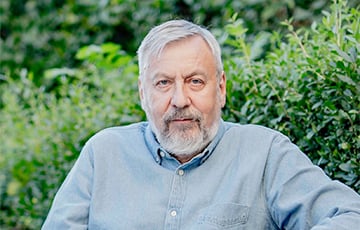Foreign Policy: Europe Has Two Options
3- 7.01.2025, 15:52
- 8,920

European peacekeeping force in Ukraine is fantasy.
France is drumming up support for a peacekeeping force. It may be Europe’s only option to prevent an even bloodier war, writes Franz-Stefan Gady, an associate fellow at the International Institute for Strategic Studies for Foreign Policy.
“War is always about choosing one risk over another. For almost three years, Europe has largely behaved as if it did not have to make that choice: It could support Ukraine’s fight against Russia and keep the European security order intact—and at the same time avoid placing its own population and military forces at risk. Considering the deteriorating military situation in Ukraine, the prospect of less military aid from Washington, and the growing likelihood of a forced cease-fire favoring Russia, however, Europe’s avoidance of painful decisions may no longer be sustainable.
The pressing question is what follows a cease-fire. Here, Europe faces two options: commit to defending a cease-fire by force if necessary or risk a more brutal conflict in the coming years that may not be confined to Ukraine.”
An honest reckoning is vital, the author is convinced:
“Without a significant Western military presence in Ukraine, any security guarantee to what remains of Ukraine will likely be ignored by Russia.
U.S. President-elect Donald Trump and his team have already bowed out of sending U.S. troops, saying this would be Europe’s responsibility. That is why French President Emmanuel Macron has been drumming up support for a European peacekeeping force. He recently visited Poland to present his case but was rebuffed. Germany’s lame-duck government also looks set to refuse. Italian Defense Minister Guido Crosetto, on the other hand, said Italy would be on board. Europe cannot escape engaging in this debate unless it is willing to risk losing Ukraine and facing a larger military confrontation in the future.”
As long as Ukraine has not stabilized the front line, discussions of European troop deployments are purely theoretical, the author writes:
“Only when Russia acknowledges that it can no longer gain meaningful victories in 2025 will it consider negotiations to freeze the conflict. We might get to this point if the incoming Trump administration follows up on signals that it may be considering an “escalate to de-escalate” strategy—in other words, to increase pressure on Russia through increased weapons deliveries to Ukraine as a way to strengthen Kyiv’s bargaining power and force Moscow to settle on reasonable terms. However, there will come a moment when Trump declares that Ukraine is now Europe’s problem, and Europe needs to be ready with a plan of action.
Any idea that Europe could deter Russia from breaking a cease-fire and renewing its attack with the presence of a light peacekeeping force is fantasy; this would simply be no match against Russia’s battle-hardened mechanized formations and thus have little deterrent value. The other option is a more robust force capable of fighting and holding its ground in the event of Russian aggression—like U.S. forces along the demilitarized zone on the Korean Peninsula or the NATO mission in Kosovo.”











